
Zhonghua Gate (Zhonghuamen Castle) in Nanjing

Chinese Name: 中华门
English Name: Zhonghua Gate (The Gate of China, Zhonghuamen Castle)
Type: Architecture; Cultural Relic
Best Time: All Year Around
Recommended Visiting Hours: 1 Day
Opening Hours: 8:30-20:00
Ticket: 50 CNY
Location: Zhonghua Road, Nanjing City 南京市中华路
Introduction
Zhonghua Gate(中华门) is one of the thirteen gates of the Ming Dynasty’s capital city wall in Nanjing. Originally known as Jubao Gate(聚宝门), it is the largest existing gate in China and an outstanding representative of defensive architecture in ancient China. Zhonghua Gate is the most well-preserved and complex Gate Castle in the world.
Zhonghua Gate is the largest and most complete one of the thirteen gates. Its original name was Jubao Gate(聚宝门), which was named after Jubao Mountain(聚宝山) in the south of the city. In 1931, it was renamed Zhonghua Gate because of the construction of Zhonghua Road(中华路). The three Chinese characters above this door are the handwriting Chiang Kai-shek.
Features of Zhonghua Gate
Architectural features
- Zhonghua Gate is 118.5 meters wide, 128 meters long, covering an area of 15,168 square meters. It is estimated that they can accommodate 3,000 people. There are 11.5 meters wide and 86.1 meters long road on both sides of Zhonghua Gate. The road is steep and magnificent. It is an express way to transport military supplies to the city in wartime. The general can also drive his horse directly to the city head.
- In the early Ming Dynasty, when Jubao Gate was built, the Imperial Court adopted a strict inspection system to ensure the quality of wall bricks. The names of Brick makers and manufacturing officials were printed on the side of each brick. Once unqualified products were found, they were immediately held accountable. This was the first quality tracking system adopted in the world. In Europe and other Western countries, it was not until the Industrial Revolution that it was adopted. Because of the strict quality tracking system and the ability to implement it strictly, the quality of the inner walls of Yingtianfu(应天府), including Jubao Gate wall bricks, is very hard. Although it has experienced the uneasy history of Dynasty changes, Taiping Tianguo (太平天国) uprising and the War of Resistance Against Japan, it still there until 600 years later, Jubao Gate, that is, Zhonghua Gate, is still well preserved.
Myth of the Gate
According to the legend, when Zhu Yuanzhang(朱元璋), the first emperor of the Ming Dynasty, had the gate built.
During the construction of Jubao Gate in Hongwu Period(洪武年间) of the Ming dynasty, an accident happened. The foundation of the gate building suddenly caved, so that the whole gate building collapsed. Zhu Yuanzhang, the emperor of the Ming dynasty, knew about this, so he ordered his counsellers to find out the reason, they said that there was a monster on the foundation of the city wall who ate the earth and bricks of the city wall, and he needed to bury a Jubaopen(聚宝盆, treasure bowl) under the city wall to suppress it. When the monster eats earth, the bowl immediately creates new earth to keep the foundation of the wall from sinking.
Bricks Inscription
Due to the strict quality tracking system, we can still see the inscriptions on the breaks. According to preliminary estimates, hundreds of millions of bricks were used to build the city wall during the Ming dynasty. The bricks are generally 40~45 cm long, 20 cm wide and 10~12 cm thick. Because the bricks comes from all over the kingdom, the earthy character of the brick material also shows diversity.
Most of the bricks have inscriptions, some are a few words (or a symbol) and some are more than 70 words. This is not only a major feature of the Ming City Wall in Nanjing, but also an important part of the historical and cultural heritage value of the Ming City Wall in Nanjing.
In order to ensure the quality of brick, the imperial court required local officials from all prefectures, counties, till the brickmaker have to leave their names on the bricks, so that when the acceptance of unqualified brick to investigate the responsibility of the brick-making person, even to kill them. This strict “quality tracking system” ensured the high quality of the construction of the city wall during the Ming dynasty.
How to Get to Zhonghua Gate
Travel with China Dragon Tours (top recommended)
If you want to get rid of hustle of transportation and troublesome navigation, you can book a private tour package which covers visiting, dining and transfer from us. Our local tour guide and driver will escort you to Zhonghua Gate with speed and convenience, and take care of all the details. You just need to focus on travel.
Independent Travel
For Independent travelers, you can get there
- By Bus: Take bus 2, 16, 49, 63, 202, 302, 701, 706, D18, or G5 to Zhonghuamen Chengbao.
- By Metro: Take Metro Line 1 to Zhonghuamen (Zhonghua Gate) directly
Nearby Attractions
Xuanwu Lake
Xuanwu Lake (玄武湖) is located in Xuanwu District in the central-northeast part of Nanjing, Jiangsu. It is designated a National Grade AAAA Attraction. It is near the Nanjing Railway Station. There are five islands within the lake are interconnected by arched bridges. Within the park are temples, pagodas, pavilions, gardens, teahouses, restaurants, entertainment venues, a small zoo, and other attractions. Its main entrance is the Xuanwu Gate.
Confucius Temple
Nanjing Confucius Temple, namely Nanjing Fuzimiao(南京夫子庙) and Nanjing Wenmiao(南京文庙), is located in Gongyuan Street(贡院街) on the North Bank of Qinhuai River(秦淮河), Nanjing City, Jiangsu Province. It is the place for offering sacrifices to Confucius. It is one of the the four major Confucian temples in China. And it is China’s famous national 5A Tourist Scenic Spot.
Presidential Palace
Nanjing Presidential Palace, located at No. 292 Changjiang Road, Xuanwu District, Nanjing City, Jiangsu Province(江苏省南京市玄武区长江路292号), is the largest and most complete architectural complex in modern China. It is also the important site of modern Chinese history. Now, it has been established as the Museum of Modern Chinese History(中国近代史博物馆).
Purple Mountain
Purple Mountain(紫金山) or Zijin Shan, Zhongshan Mountain, is located on the eastern side of Nanjing in Jiangsu province. Covered by verdant trees, the main peak of Purple Mountain is 448.9 meters above sea level. Its peaks are often found enveloped in mysterious purple and golden clouds at dawn and dusk, hence its name. It is a national 5A tourist scenic spots in Jiangsu, as well as a world cultural heritage. Priple Mountain is not noly full of baeutiful natural scenery but also rich in cultural.
Useful Travel Tips
Tickets Fare:50 CNY
Opening Time: 8:30-20:00
Best time to visit: as a cultural sight, it is suitable for visiting all year around. 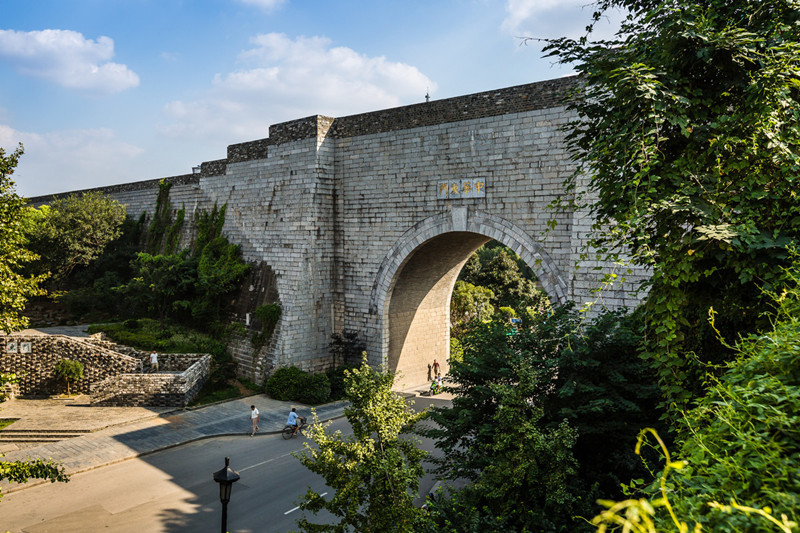
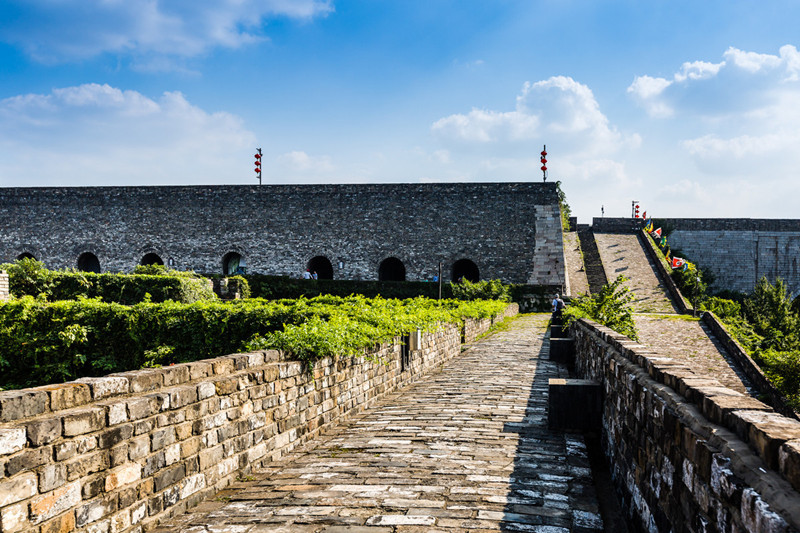
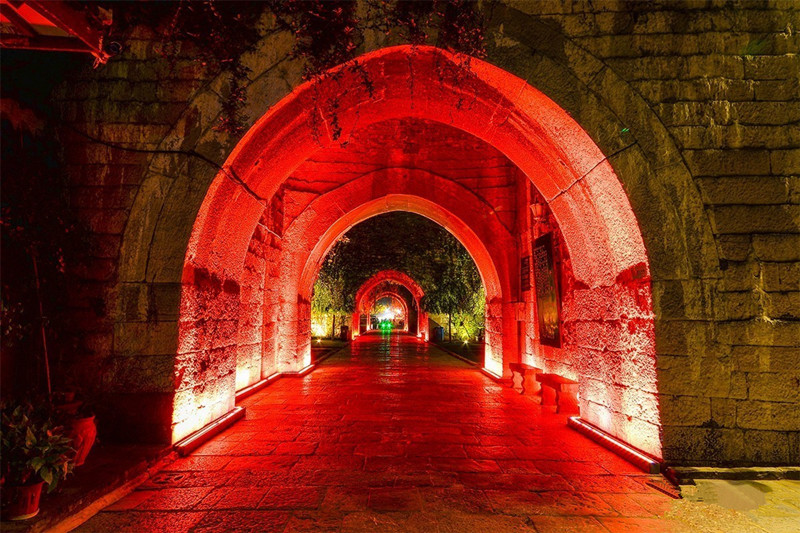

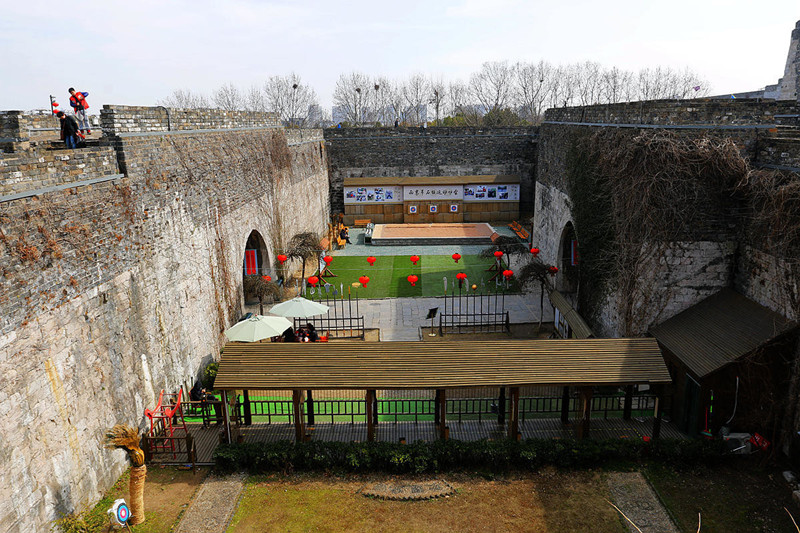
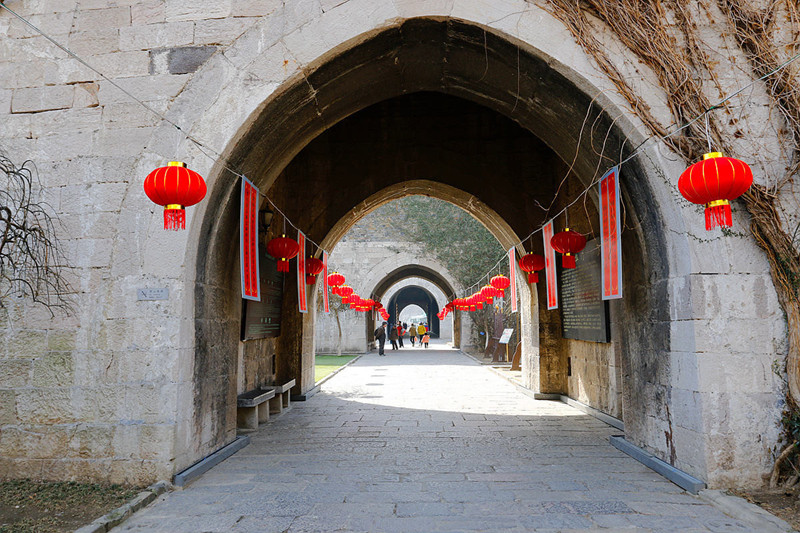














One thought on “Zhonghua Gate (Zhonghuamen Castle) in Nanjing”